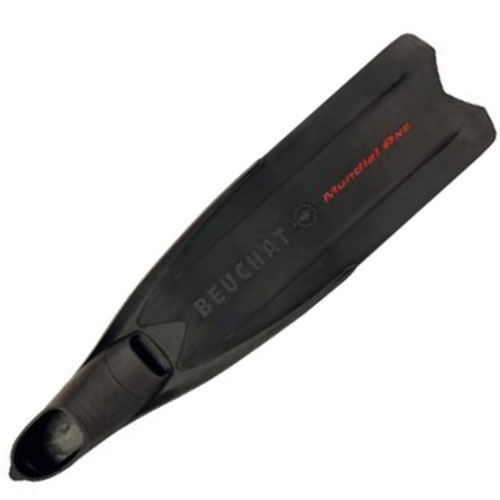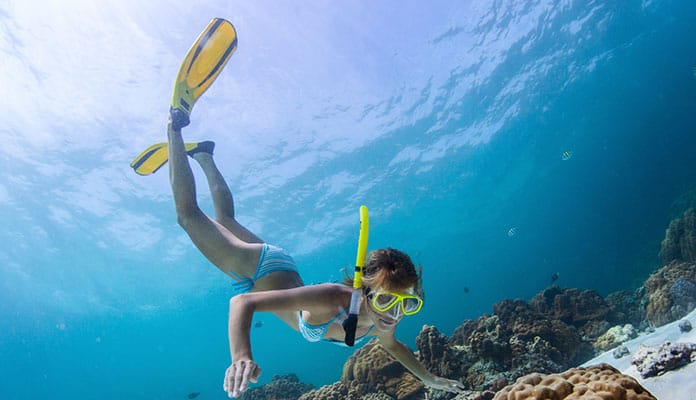
-
1.
-
2.
-
3.
-
4.
-
5.
The key to freediving is having the best freediving fins you can get. Most people with any experience in this sport will tell you that being able to move effortlessly is one of the hardest aspects to master. The specially designed fins help to propel you through the water without overexerting yourself.
With that being said, finding the best freedive fins can be a difficult task. There are so many terms and materials that the average person may not understand. To make it easier we have created a list of the top freediving fins of 2023 so you don’t have to.
Ready to get started? Let’s go.
OUR TOP PICK
MAKO Spearguns Freedive Hunter Fins
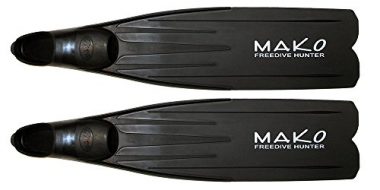
- Stand Out Features - Why We Love It
- High tech design
- Comfortable boot
- Lots of sizes available
EDITORS CHOICE
Cressi GARA 3000 Long Soft And Powerful Fins
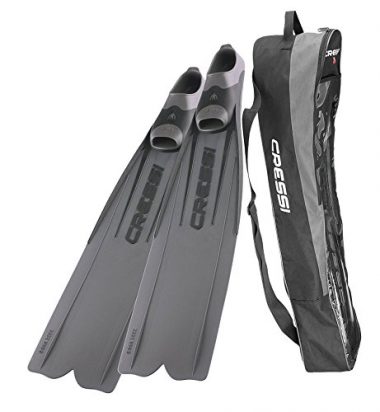
- Stand Out Features - Why We Love It
- Can be worn with or without dive socks
- Perfect for beginners
- Excellent combination of materials
BEST VALUE
Omer Stingray Fins With Black Blade Fins
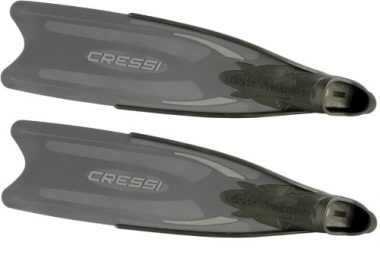
- Stand Out Features - Why We Love It
- 24 month warranty
- Easy to use pull tab
- Specially designed ribs
MAKO Spearguns Competition Fins
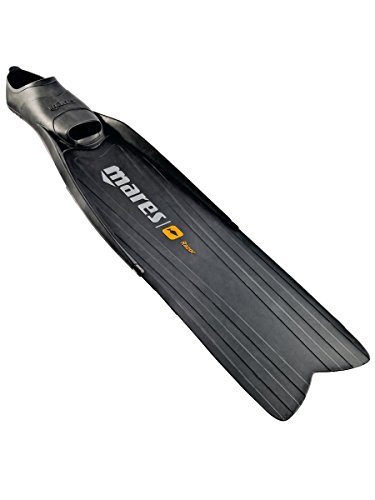
- Stand Out Features - Why We Love It
- Modular fins
- Can use angled blades
- Upgradable over time
Mares Pure Instinct Razor Pro Fins
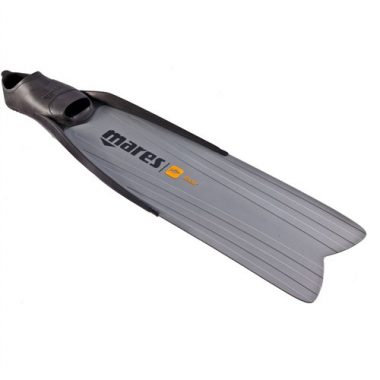
- Stand Out Features - Why We Love It
- Interchangeable blades
- Superior technology
- V shaped tips
Beuchat Mundial One Fins
- Stand Out Features - Why We Love It
- Ideal for beginners
- Built-in stabilizers
- High quality materials
Rob Allen Plastic Long Blade Spearfishing Fins
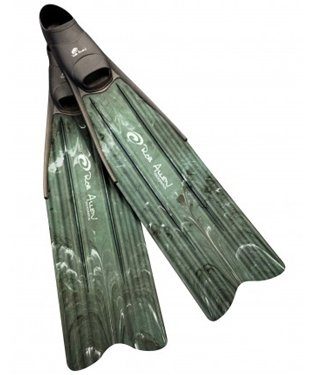
- Stand Out Features - Why We Love It
- Specially designed coating on the blade
- Camouflage design
- EPDM rubber foot pocket
Cressi Gara 2000HF Long Fins
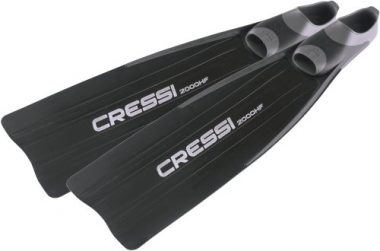
- Stand Out Features - Why We Love It
- Rust-resistant frame
- Larger 300 pound weight capacity
- Padded shoulder straps
- Thick cushioned neck supporting pillow
Omer Stingray Carbon Fin Blade Fins
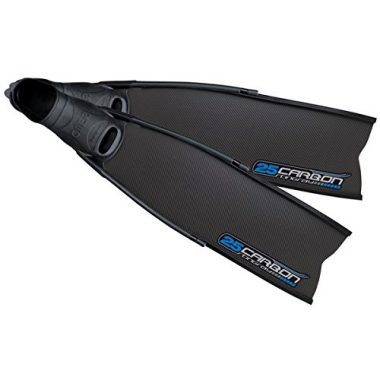
- Stand Out Features - Why We Love It
- 3 stiffness styles
- Carbon fiber design
- Lightweight
Maverick C4 Falcon Carbon Fibre Fins
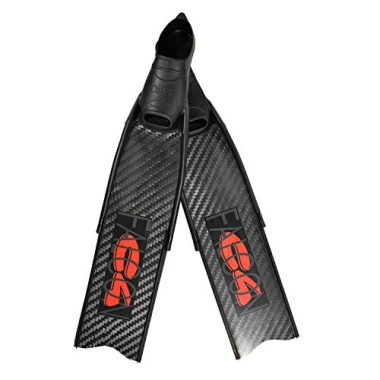
- Stand Out Features - Why We Love It
- Full carbon blades
- Lightweight
- High quality design and materials
How To Choose Freediving Fins – Buying Guide
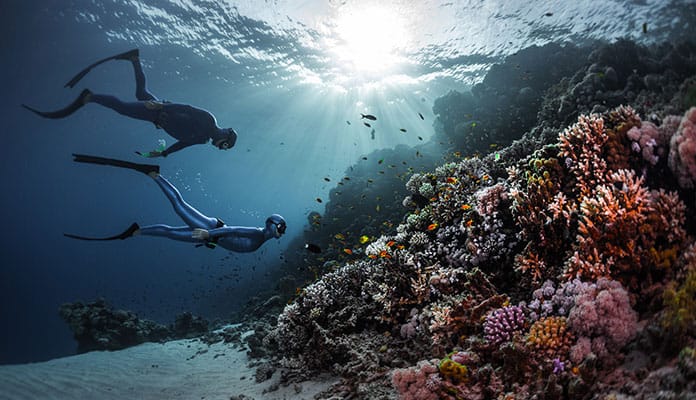
When looking for your next pair of freediving fins, there are 6 key factors you will want to take into account. Understanding these aspects will help you make the most informed decision and help get you into the best pair of freedive fins.
1. Skill Level
This should be the first question you ask yourself. Are you just learning the sport are you someone who has quite a bit more skill? Commonly people tend to overshoot their skill level which can make it so they don’t choose the best freediving fins. Remember that your skill level and ideal freedvie fin may not be the same as your dive buddies and that is ok.
You will want to consider how much you are going to be using your fins at this point as well. While you may be just starting out, if you plan to be practicing a lot and increasing your skill level then you may be better suited to get a fin that can move with your changing skill level.
Beginners will be better suited opting for inexpensive polymer fins made of plastic. These will be more than suitable for the learning stages of diving. Alternatively, divers with more skill will be better suited with a higher quality fiberglass or carbon fiber fin.
2. Material
Freediving fins are not all created equally. There are three main types of materials that can be used. The type you get should be based on your experience level, amount of use and budget. You will be choosing between polymer plastic, fiberglass or carbon fiber materials.
Polymer Plastic: This type of material is the most affordable option and is what most beginner divers opt for. They offer a good amount of flexibility and come at an excellent value. This is the most common fin type on the market due to their affordable price point and impressive durability. These are great freddiving fins to opt for when traveling as they can survive the bumps and scratches of travel. The affordable cost comes at a price as the efficiency of these freedive fins typically don’t last as long. This material has a memory technology that when used over time causes it to mold into a curved shape. While still usable, you will not receive the same efficiency with a curved blade as you would with a stronger straight blade.
Fiberglass: This material is more expensive than the polymer plastic and does not offer as much flexibility. This is a great advantage as it allows them to maintain their shape even after extended use. This fin type is quite durable and can easily withstand some rough use underwater.
Carbon Fiber: This is the most expensive type of fin that is best suited for avid divers. This material provides the most high quality fin. Carbon blades are much more efficient than other material types. They feature the largest ratio between propulsion and energy making you get the most out of each kick. This fin type is incredibly lightweight making them popular amongst professional divers. Not without drawbacks, this fin type is quite fragile requiring added care. They are completely memory free which makes it so they will stay stiff and straight even after long term use. This makes them a far superior choice over cheaper polymer fins.
3. Budget
It is important to consider your budget and come up with a number you are comfortable with before starting your search. Freedive fins typically range in price quite drastically starting at around $80 for plastic fins. This price can jump to over $600 for the highest quality custom made carbon fin. The price ranges between plastic, fiberglass and carbon fins should be considered and go up respectively in that order. When considering your budget, remember that proper technique when diving will give you a far greater advantage than having a higher priced fin will.
4. Focus On Fit
Always try your fins on before you buy them. If buying online, make sure you thoroughly understand the sizing charts. Keep in mind that most commonly manufacturers size their fins on the bigger size. This is because typically people wear socks with their fins. You will want to have a fin that fits snug around your foot. This will allow you to get the most efficiency out of your fin as a larger heel will effectively waste energy. If you plan to wear neoprene socks, check to see if the manufacturers have included this thought in their sizing chart. You will also want to look at the return policy of the fin to ensure that you can easily return it if the size isn’t quite right.
You might also like: Freediving Dangers And Risks
5. Foot Pockets And Blade
While standard freediving fins come as a one piece set including both the foot pocket and blade, that isn’t your only option. Some divers prefer to opt for fins that are detachable and therefore purchase the foot pocket and blade separately. This option is more expensive but does have many benefits that make it worth considering. You will be able to combine different brands and sizes making it ideal for getting the best fit possible. You also will receive benefits when it comes time to replace your blade and can do so without replacing your foot pocket.
6. Stiffness
Freediving fins come in many different amounts of stiffness. The type that is best for you depends largely on your body shape. That is, your height and amount of muscles will affect your propulsion and therefore the type of fin that is best for you. Divers with short legs that do not have a ton of muscle will be better suited with a softer blade. Alternatively, fit divers with longer legs produce weaker propulsions making it better to opt for a fin with a longer blade. Generally speaking, opting for a blade in the medium to soft area will be the best bet for every diver. This will give you the bend you are looking for which will make your kicks stronger.
FAQs
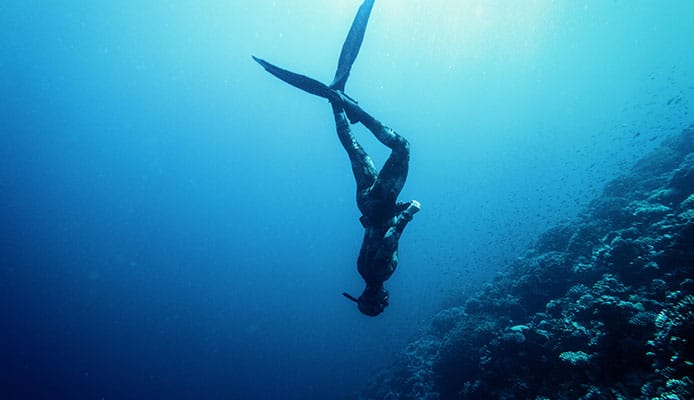
Q: How Do I Use Freediving Fins?
Freediving fins will fit on your feet much the same as snorkel and scuba fins will. Most will have a pocket for your feet slip in. This will make them sleek and reduce the drag through the water. There are many different techniques you can use when freediving. Some people like to kick their feet independent, like you would snorkeling or scuba diving. While others like to move their feet together in one smooth motion.
No matter which way you kick your freedive fins your legs should be straight from your hip to your toes. Any bend in your leg will create unnecessary movement which will cost you unnecessary air – something you need dearly when freediving.
Related Review: Snorkeling FinsQ: Why Are Freediving Fins So Long?
These fins are so long because they need to propel you through the water. Essentially, the longer a fin is the more water it can move, which in turn pushes you through the water further. Smaller fins move less water and your movement takes longer and more effort. To generate the most efficiency these long fins require much less effort making it easier for you to dive below the water’s surface.
Q: How Long Are Freediving Fins?
Freediving fins vary in length depending on the type you decide to opt for. In general, you can expect these to be a great deal longer than other types of fins. You can expect the blade of your freedive fin to be around 22 – 27 inches. The length of your foot pocket size will vary on an individual basis making the length of your fin around 40 inches.
Q: How Hard Is It To Use Freediving Fins?
Freediving fins are designed specifically to be easy to use. They are made differently than snorkel fins so that they can deliver a maximum amount of efficiency. Their long blades allow for better propulsion through the water making it so that with every stroke you move further through the water. For those that have ever used fins, say with scuba diving, you will have a very easy time transitioning to a freedive fin.
Globo Surf Overview
Finding the best freediving fins doesn’t have to be a stressful task. Knowing the advantages of each pair will help you determine which ones will be ideal for your use. If you are looking for an all around great pair we suggest looking at the modular fins. They will allow you to upgrade and customize your blades depending on your use. The most important part is having fun while diving!
More Scuba Reviews:
- Dive Camera
- Dive Light
- Full Face Scuba Mask
- Dive Watches Under 200
- Dive Watch Under 1000
- Dive Watches Under 500
- Scuba Mask With Purge Valve
- Underwater Scooter
- Scuba Regulator
- Rebreather



